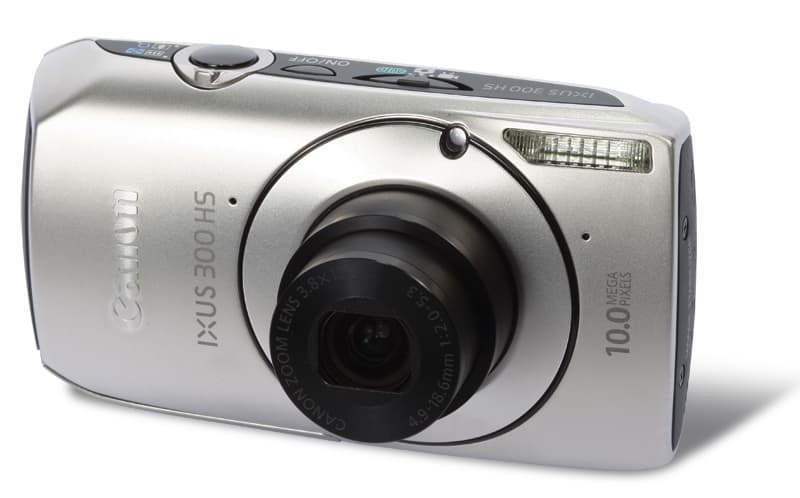Canon IXUS 300 HS review – Introduction
Short dynamic range and poor performance in low-light conditions are two of the most obvious downsides to shooting with a compact camera. With this in mind, Canon has shifted its emphasis from a high pixel count to images with less noise and more detail in its latest compact camera, the IXUS 300 HS.
We might deduce that the HS stands for high speed/sensitivity, but Canon tells me that it doesn’t stand for anything. In much the same way as Canon has reduced the number of pixels in its PowerShot series – the G11 has ten million pixels, while its G10 predecessor has 14.7 million – the 300 HS has 4.1 million fewer pixels than the IXUS 210, Canon’s highest pixel-count IXUS compact camera.
Canon’s new Ixus 300 HS has DIGIC 4 processing and a high-sensitivity, back-illuminated CMOS sensor. When these are combined with the same size sensor as previous IXUS models, lower noise levels should be ensured. The wide and bright lens has an effective focal range of 28-105mm and an aperture of f/2 at 28mm (effective), through to f/8 with several aperture settings in between.
Build and Handling

Elegant curves and a stainless-steel body encase the slim, mobile phone-sized IXUS 300 HS. There is no viewfinder, but the 3in, 230,000-dot, 16:9 aspect ratio LCD screen has a wide viewing angle both horizontally and vertically, and can be seen reasonably well in sunlight.
The widescreen format is perhaps an indication that HD video will become an increasingly prominent feature in future compact camera releases. I was concerned that I might crack the screen when the camera was in my pocket, but it survived when treated with care.
There are many features consistent with recent releases in the IXUS range (see the IXUS 210 test), such as smile- and blink-recognition shooting modes. These work particularly well when shooting children or when using the self-timer.
The menu is simple to navigate with the responsive scroll wheel, which enables button provision to be kept to a minimum. Enthusiasts will appreciate the aperture and shutter priority modes, but there is no fully manual setting.
Performance
Images are generally punchy, and both the white balance and auto meter readings are accurate. There is no manual-focus mode, but the AF (nine-point and fixed-to-centre one-point) is responsive and performs well. However, I would have liked the option to select the active focus point in the one-point setting.
Images have detail in high-contrast scenes, such as sunny skies and shadows, indicating that the IXUS 300 HS has a high dynamic range. In extreme high-contrast scenes the i-contrast mode can be activated to brighten shadows and increase midtone contrast, but overall images tend to look flatter. In backlit conditions there is a little fringing, but these issues are minor as they will only be noticeable on prints of A3-plus in size.
 Image: In scenes of high contrast, detail is retained even in areas of shadow
Image: In scenes of high contrast, detail is retained even in areas of shadow
Chroma noise is virtually non-existent and at ISO 3200 luminance noise is handled quite well, with only a hint of smudging. In fact, the camera scored an impressive 18 at ISO 100 and 14 at ISO 3200 in our resolution chart tests. In low-light shooting mode ISO 6400 is available, but the pixel count drops to 2.5 million so few photographers will use this option. In continuous shooting mode, 3.7fps can be achieved at full resolution, but to achieve the maximum 8.4fps the pixel count again drops to 2.5 million pixels.
Having used both the scene selection and semi-auto shutter/aperture priority shooting modes, I found that the Smart Auto mode accurately produced optimal settings, including white balance. I was generally happy to settle for this as a default, and when the Smart Auto mode wasn’t suitable I found the menu simple and easy to navigate.
Our verdict
This stylish little camera packs a big punch. The dynamic range and low-light performance are excellent thanks to the HS-system CMOS sensor, and the Smart Auto mode is reliable under a variety of settings.
With a few fun extras thrown in like fisheye and miniature-effect modes, the Canon IXUS 300 HS should interest both the casual and discerning photographer.







